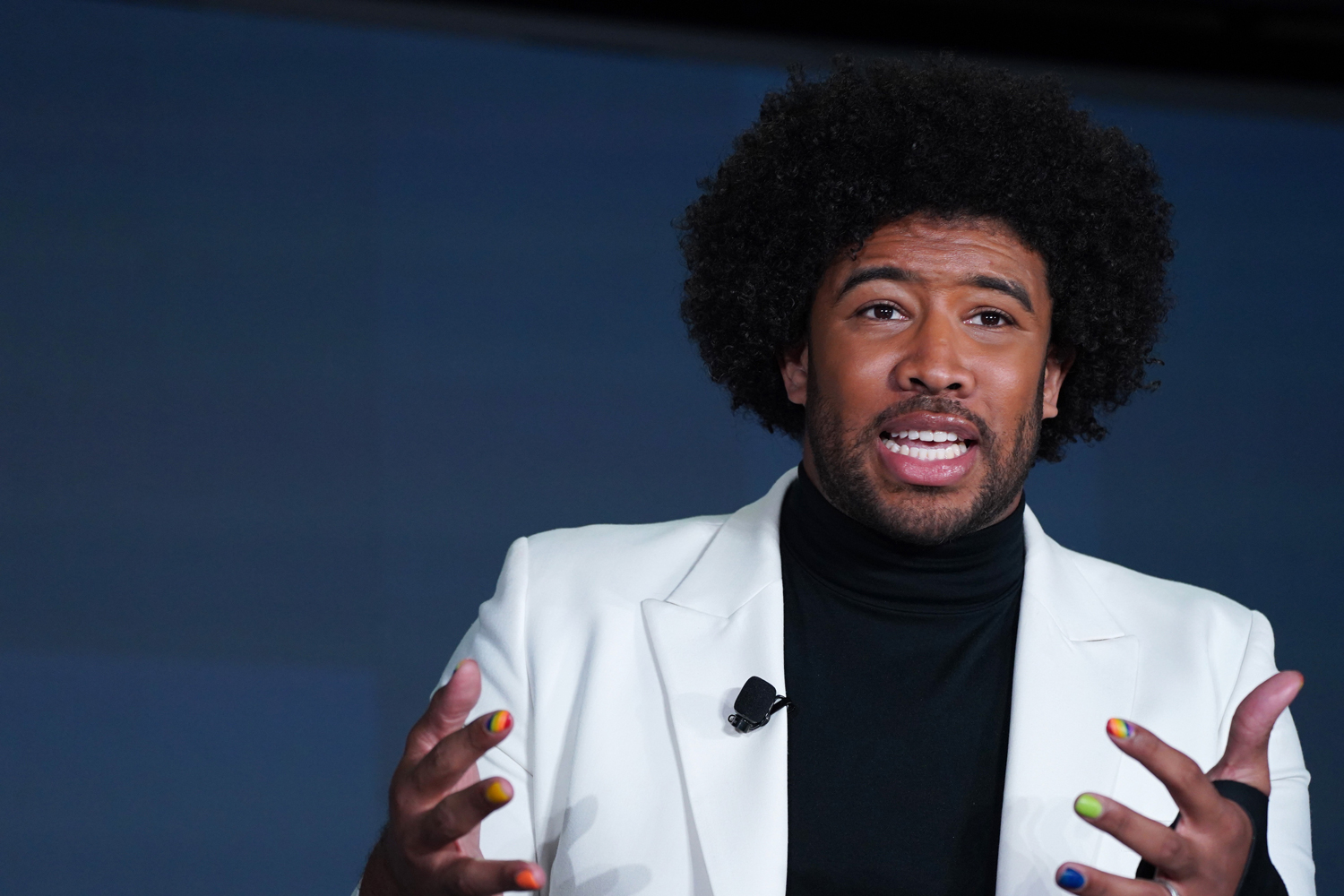Traditionally, The boys’ job in ballet is to throw the girls around. So what happens when you throw out the girls altogether?
By Matt Gurry
This article was originally printed in our October/November 2014 issue. We re-publish it now in advance of the Boyz’ NYC debut at the The Joyce Theater, from February 23–28. Tickets here. Learn more about the Ballet Boyz at balletboyz.com.
Ballet is often thought of as a woman’s world. When we think of the art form, we think tutus and tiaras, swans and sugar plums. But it hasn’t always been this way. Ballet started as a ceremony for the French nobility, performed by kings and princes. Then came the French Revolution, and these dancing patriarchs found themselves without jobs — or heads.
For ballet to survive, it had to adapt for its newly populist audience. Jennifer Homans explains in Apollo’s Angels, her definitive history of ballet, that early in the 19th century, “men went from being paragons of their art to pariahs chased from the stage.” However, two centuries later and an English Channel away, one company has returned the men to center stage.
THE BOYZ ARE BACK
BalletBoyz was founded by Michael Nunn and Billy Trevitt. Both having trained at London’s Royal Ballet School, they went on to dance all the prince roles (the male leads in classical story ballets) for The Royal Ballet, where they also tackled contemporary work by great choreographers such as Christopher Wheeldon and Twyla Tharp. This august company introduced the world to important choreographers such as Sir Frederick Ashton; it first showcased the partnership of Margot Fonteyn and Rudolf Nureyev (whom many ballet afficianados would call the art’s greatest pairing). To leave a company of this prestige would be harebrained. And yet, that’s exactly what Nunn and Trevitt did.
They sought a newer, more approachable presentation for modern ballet. Their solution involved focusing on the pyrotechnic work of the males — the pirouettes, the grands jetés — and setting them to new music with exciting production values. (It also involved stripping the dancers to only the most necessary costuming.)
But it was a risky endevor. Much of their intended audience had historically never cared for dance. As the Boyz toured the U.K., many of their venues had never even presented live dance. It was essentially a prospect guaranteed to fail.
But it didn’t.
When Nunn and Trevitt turned from tradition, audiences came with them. Within four years, BalletBoyz was named an associate artist of London’s premier dance house, Sadler’s Wells. National and European awards began racking up; mainstream television appearances continued bringing in new, enthusiastic, young audiences — an especially coveted demographic in the performing arts. It was an impressive and quick success in an age when it’s a coup for any independent dance company to make it to the 10-year mark — never mind one that presents unconventional, often sensual male-male partnering. Nunn and Trevitt had changed the rules.
A NEW EXPERIMENT
A decade later: Nunn and Trevitt found themselves looking at the waning days of their own careers as dancers, even as demand for their company continued to grow. They addressed this angst by questioning what’s more valuable for a dancer: formal training or raw talent. They hypothesized that talent wins and decided to test this theory with a new project whose participants would be chosen based on their dancing — not their résumés.
They held an open audition for men ages 20–25; formal training was not a prerequisite. The eight dancers selected came from a broad spread of backgrounds, including one who’d had no formal training at all. They christened this venture, fittingly, BalletBoyz: The Talent.
When the show took to the road, critics appreciated what they saw. The Independent celebrated the dancers’ power, noting how their “bodies, honed for heavy industry, strut like Greek gods.” Audiences appreciated work that offered a more brutish, wild strength than what they’d see in traditional, mixed-gender companies. To watch the Boyz is to watch amazing athletes in action — muscles engaged most people don’t know they have.
GETTING A REPUTATION
There is a Wikipedia entry titled “Western stereotype of the male ballet dancer.” It looks to psychologists’ writings on the specific subject of males in dance, mainly citing an essay authored by Jennifer Fisher and Anthony Shay called “When Men Dance.” The entry’s first sentence notes that, since the early 19th century, male ballet dancers have been seen as “weak” and “effeminate.” Other prominently featured words include “sissy,” “frail” and (understood as a putdown, of course) “homosexual.” This reputation is what the Boyz are up against.
Yet, following them on Twitter and Instagram is like following One Direction. The social media generation can’t get enough of BalletBoyz, in the U.K. and beyond, and this fall, North America will get to experience a new mounting of Nunn and Trevitt’s great experiment, The Talent, as the Boyz tour the U.S. and Canada. The program offers two pieces: “Serpent”, a sensual movement piece choreographed by hot young thing Liam Scarlett, and the warlike “Fallen,” created by Russell Maliphant.
As for the Boyz themselves? There are 10 of them. Some are pretty boys; some sport tattoos. One was sent off to dance school to burn off the energy that made him impossible in school. But they are united by a certain spirit — that same mischief that called Nunn and Trevitt from The Royal to create BalletBoyz some 15 years ago. They’re committed to their work, which, while not sexual, flaunts an unabashed, athletic homoeroticism. They are young. They are brave. This new crop indeed struts like Greek gods. But above all, they are indisputably talented.
Last modified: January 17, 2018













Photo 2. Middle guy. DAT ASS!
STILL THINKING ABOUT IT.
Nothing like sticky buns for breakfast.
How do I get my tush to look like that?